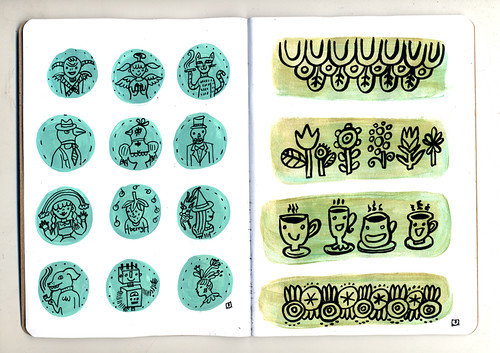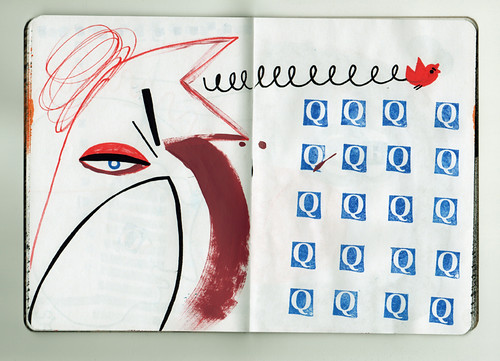Meet Ulana Zahajkewycz, a talented freelance illustrator, book artist, illustration teacher, and creative living and working in Palmyra, NJ. Ulana has been creating great illustrations for over 20 years, and she is known for her playful and colorful style, unique and lovable characters, and narrative illustrations- her work is ambitious and inspiring to say the least! On top of professional projects, editorial works, and teaching, Ulana manages her own studio practice known as Ulanaland, where she created multimedia works for exhibitions and her online shop.
Over the past year, Ulana has participated in several Light Grey Art Lab Exhibitions such as The Light Grey Tarot, Beautiful Forever, and the current 6 Degrees Exhibition, and we are thrilled to have a chance to interview herabout her practice, her stages of making, and what is next in Ulanaland!
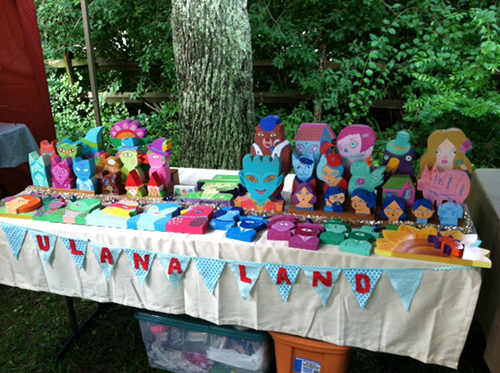
Could you tell us a little about yourself and your background in illustration?
My name is Ulana Zahajkewycz and I currently live in Palmyra, NJ, which is 5 minutes from Philadelphia, PA. I have lived in a few different locations, including Cranford, Montclair, and Mahwah NJ, Bedford N.H. and in Hastings and Minneapolis, Minnesota. That’s a lot of moving around! My BFA in illustration is from Montclair State University and my MFA in illustration is from the Minneapolis College of Art and Design.
I’ve been illustrating for a while now, since 1993. I also teach illustration. I’ve taught the subject at Montclair State University, Minneapolis College of Art and Design and now at Moore College of Art. Moore is the only private all woman’s art college in the country! When I am not working for a client, teaching or working on a show, I love to plant flowers and move dirt around. Springtime is my absolutely favorite time of year because I get to be outside working the soil. All the bugs are still asleep and they don’t even know I’m out there!
Could you talk about the piece you created for the 6 Degrees Exhibition? What were your stories/sources of inspiration?
For my 6 Degrees piece, I wanted to illustrate my romance with gardening and this plot of land I live on. We don’t have a lot of space in our backyard, but we still manage to grow a lot of food out there. That is the subject of the postcard.
Last year, I did some research on Palmyra and discovered that the Lenni Lenape tribe first settled this land and that some of the main roads in town are Indian trails from long ago. When I drive down those roads, I think about the Lenape tribe and I feel like were are traveling along together, past and present. We are only separated by time.

In the postcard, I am in the center, planting seeds and the woman with the braids is meant to be Lenape. She is holding the sun, because to me, I would not be here if it were not for her tribe establishing a presence in this area. The turtle in the grass is one of the symbols that represent the Lenape tribe on their seal and on their flag. The man in the back pouring water is meant to represent the non-Indian settlers that established the town. Some of the other characters, the gnome, faerie and fox are meant to represent the magical land that my house sits on. I like to believe that an unseen world exists all around me. I try to give respect to the land because only then will it yield its gifts. Of course my cat Underdog had to make an appearance in the postcard. She is definitely the heart and soul of this household and should be given her due.
You have actually lived in several different places. How does location influence the ideas, imagery, folklore, and materials?
Wherever I go, I try to collect stories. Sometimes a trip to the library provides what I need, other times local folks will tell me stories about the land and its inhabitants (both real and unreal). These days, it’s hard to find people that tell stories about their land. It’s an oral tradition that seems to be dying out. That’s why illustration is so important to me. You can tell the story in your imagery. That way, maybe the story will live forever.
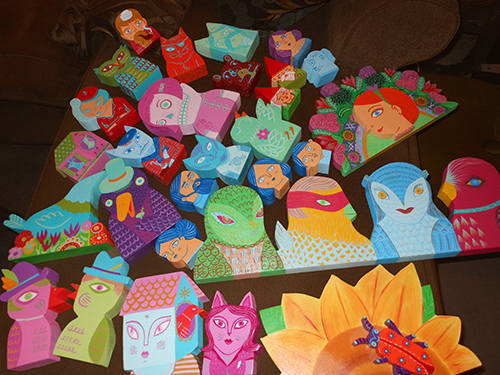
I am extremely interested in all of the materials and techniques that you use in your practice. What was the transition like from illustrations to three-dimensional works?
I have been painting with gouache, watercolor, and acrylic for a long time. In my college days, I was working in ceramics (truthfully, I started working with clay when I was in high school!) and found the change in dimension so fun and freeing. For a little while after college, I tried working with balsa wood, but that always ended in disaster! To see a carefully cut and painted piece turn into a pile of crumbled wood is heartbreaking!
In 2007, my friend Margie McGee approached me to collaborate with her on a faculty exhibition piece. She showed my how to use a band saw and it took off from there. There is something really satisfying about working with wood and seeing your work in object form. These days, I have my own band saw and make wooden work on a regular basis. Honestly, if given the choice, I will always choose basswood over paper. It’s funny, when I look at my two-dimensional work next to my wooden work; it looks like a natural progression. What vexed me for so many years was how to create 3d work in a material that was easy to find and easy to work with. Wood is that perfect medium for me.
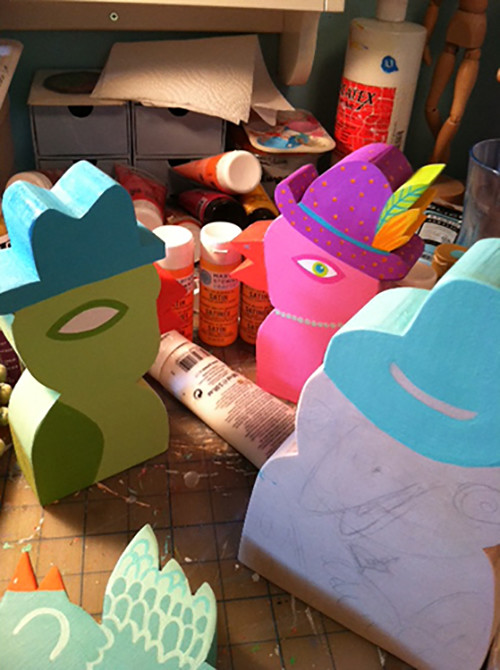
You are extremely prolific and recognized illustrator making works for gallery exhibitions, editorial, personal pieces, commissions, etc. Do you have a different approach to different kinds of projects?
These days, the field of illustration is very unpredictable, so you have to find ways to get your work out in front of people. I began creating work for galleries because I wanted to keep making art, even if there wasn’t a client. It is a great way for me to create a new body of work to show people that I am here, I am working hard and I am always evolving and changing. Best of all, when I have completed the work for a show, I have fresh work to put on my website and to sell at the gallery and on Etsy. Many wins!
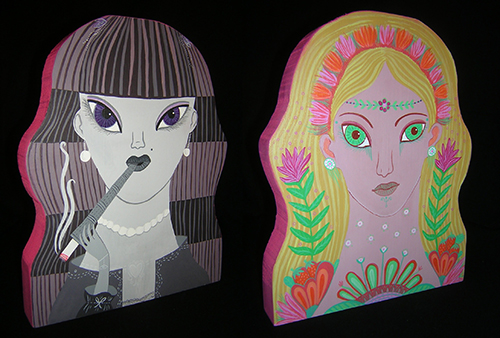
As far as my approach to different kinds of making goes, I try to ask myself the basic questions about the venue or vehicle. What is the message and who is the audience? It all starts with sketches and ideation. When I create my wooden folk, I have to also ask, will this hang on a wall or will this stand on its own? I choose the appropriate thickness of wood to accommodate the way it will be displayed. Everything is painted in similar way, which is why all my 2d work looks like my 3d work.
What is the most monumental project you have worked on? (changed your approach, appreciation, favorite piece)
In 2011, my work appeared in a two-person show with Tara Murino-Brault at the Lunar Boy Gallery in Astoria, Oregon. Utopia/Dystopia: The Shadow and the Light was an ambitious show and I created 15 new wooden folk pieces of varying sizes. This was my first all wooden show and it was by far, my favorite to date. It was the first time I realized that I could just create wooden art without any 2d work to accompany it. I felt that I had crossed over to that space where I wasn’t only considered an illustrator, but also a visual artist. It’s nice to wear many hats. Sometimes you are pigeonholed as an artist because of the type of work that you primarily create. It’s nice to know that you can do something completely different and then go back and forth between whatever type of work you feel like making that day.
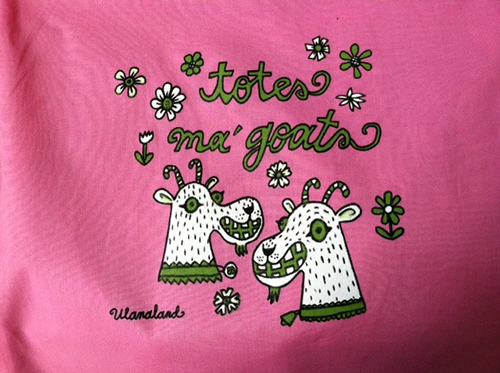
What is the best piece of advice (for creators) that you have ever heard?
Marshall Arisman says, “Learn to illustrate your own words”. He also recommends that artists make a list of things they know something about. Illustrate those things and create a series of images based on your list.
This time of year, especially, we are thinking about deadlines, new goals, motivation, and changes. Do you have any goals or projects for the new year?
I have recently begun making sketches for some new wooden folk. I’d like to show them in a gallery when they are done, so I’ll need to find the right venue. If you build it, they will come!
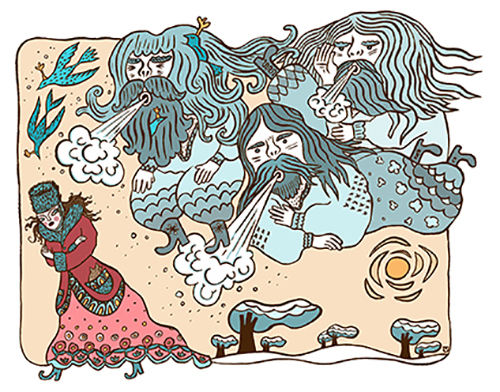
Thank you, Ulana! It is always inspiring to hear the inside story and thoughts behind the maker! You can see more of Ulana's work on her website here, you can also see her work for the 6 Degrees Exhibition on the digital gallery or Light Grey Shop.
Over the past year, Ulana has participated in several Light Grey Art Lab Exhibitions such as The Light Grey Tarot, Beautiful Forever, and the current 6 Degrees Exhibition, and we are thrilled to have a chance to interview herabout her practice, her stages of making, and what is next in Ulanaland!

Could you tell us a little about yourself and your background in illustration?
My name is Ulana Zahajkewycz and I currently live in Palmyra, NJ, which is 5 minutes from Philadelphia, PA. I have lived in a few different locations, including Cranford, Montclair, and Mahwah NJ, Bedford N.H. and in Hastings and Minneapolis, Minnesota. That’s a lot of moving around! My BFA in illustration is from Montclair State University and my MFA in illustration is from the Minneapolis College of Art and Design.
I’ve been illustrating for a while now, since 1993. I also teach illustration. I’ve taught the subject at Montclair State University, Minneapolis College of Art and Design and now at Moore College of Art. Moore is the only private all woman’s art college in the country! When I am not working for a client, teaching or working on a show, I love to plant flowers and move dirt around. Springtime is my absolutely favorite time of year because I get to be outside working the soil. All the bugs are still asleep and they don’t even know I’m out there!
Could you talk about the piece you created for the 6 Degrees Exhibition? What were your stories/sources of inspiration?
For my 6 Degrees piece, I wanted to illustrate my romance with gardening and this plot of land I live on. We don’t have a lot of space in our backyard, but we still manage to grow a lot of food out there. That is the subject of the postcard.
Last year, I did some research on Palmyra and discovered that the Lenni Lenape tribe first settled this land and that some of the main roads in town are Indian trails from long ago. When I drive down those roads, I think about the Lenape tribe and I feel like were are traveling along together, past and present. We are only separated by time.

In the postcard, I am in the center, planting seeds and the woman with the braids is meant to be Lenape. She is holding the sun, because to me, I would not be here if it were not for her tribe establishing a presence in this area. The turtle in the grass is one of the symbols that represent the Lenape tribe on their seal and on their flag. The man in the back pouring water is meant to represent the non-Indian settlers that established the town. Some of the other characters, the gnome, faerie and fox are meant to represent the magical land that my house sits on. I like to believe that an unseen world exists all around me. I try to give respect to the land because only then will it yield its gifts. Of course my cat Underdog had to make an appearance in the postcard. She is definitely the heart and soul of this household and should be given her due.
You have actually lived in several different places. How does location influence the ideas, imagery, folklore, and materials?
Wherever I go, I try to collect stories. Sometimes a trip to the library provides what I need, other times local folks will tell me stories about the land and its inhabitants (both real and unreal). These days, it’s hard to find people that tell stories about their land. It’s an oral tradition that seems to be dying out. That’s why illustration is so important to me. You can tell the story in your imagery. That way, maybe the story will live forever.

I am extremely interested in all of the materials and techniques that you use in your practice. What was the transition like from illustrations to three-dimensional works?
I have been painting with gouache, watercolor, and acrylic for a long time. In my college days, I was working in ceramics (truthfully, I started working with clay when I was in high school!) and found the change in dimension so fun and freeing. For a little while after college, I tried working with balsa wood, but that always ended in disaster! To see a carefully cut and painted piece turn into a pile of crumbled wood is heartbreaking!
In 2007, my friend Margie McGee approached me to collaborate with her on a faculty exhibition piece. She showed my how to use a band saw and it took off from there. There is something really satisfying about working with wood and seeing your work in object form. These days, I have my own band saw and make wooden work on a regular basis. Honestly, if given the choice, I will always choose basswood over paper. It’s funny, when I look at my two-dimensional work next to my wooden work; it looks like a natural progression. What vexed me for so many years was how to create 3d work in a material that was easy to find and easy to work with. Wood is that perfect medium for me.

You are extremely prolific and recognized illustrator making works for gallery exhibitions, editorial, personal pieces, commissions, etc. Do you have a different approach to different kinds of projects?
These days, the field of illustration is very unpredictable, so you have to find ways to get your work out in front of people. I began creating work for galleries because I wanted to keep making art, even if there wasn’t a client. It is a great way for me to create a new body of work to show people that I am here, I am working hard and I am always evolving and changing. Best of all, when I have completed the work for a show, I have fresh work to put on my website and to sell at the gallery and on Etsy. Many wins!

As far as my approach to different kinds of making goes, I try to ask myself the basic questions about the venue or vehicle. What is the message and who is the audience? It all starts with sketches and ideation. When I create my wooden folk, I have to also ask, will this hang on a wall or will this stand on its own? I choose the appropriate thickness of wood to accommodate the way it will be displayed. Everything is painted in similar way, which is why all my 2d work looks like my 3d work.
What is the most monumental project you have worked on? (changed your approach, appreciation, favorite piece)
In 2011, my work appeared in a two-person show with Tara Murino-Brault at the Lunar Boy Gallery in Astoria, Oregon. Utopia/Dystopia: The Shadow and the Light was an ambitious show and I created 15 new wooden folk pieces of varying sizes. This was my first all wooden show and it was by far, my favorite to date. It was the first time I realized that I could just create wooden art without any 2d work to accompany it. I felt that I had crossed over to that space where I wasn’t only considered an illustrator, but also a visual artist. It’s nice to wear many hats. Sometimes you are pigeonholed as an artist because of the type of work that you primarily create. It’s nice to know that you can do something completely different and then go back and forth between whatever type of work you feel like making that day.

What is the best piece of advice (for creators) that you have ever heard?
Marshall Arisman says, “Learn to illustrate your own words”. He also recommends that artists make a list of things they know something about. Illustrate those things and create a series of images based on your list.
This time of year, especially, we are thinking about deadlines, new goals, motivation, and changes. Do you have any goals or projects for the new year?
I have recently begun making sketches for some new wooden folk. I’d like to show them in a gallery when they are done, so I’ll need to find the right venue. If you build it, they will come!

Thank you, Ulana! It is always inspiring to hear the inside story and thoughts behind the maker! You can see more of Ulana's work on her website here, you can also see her work for the 6 Degrees Exhibition on the digital gallery or Light Grey Shop.

